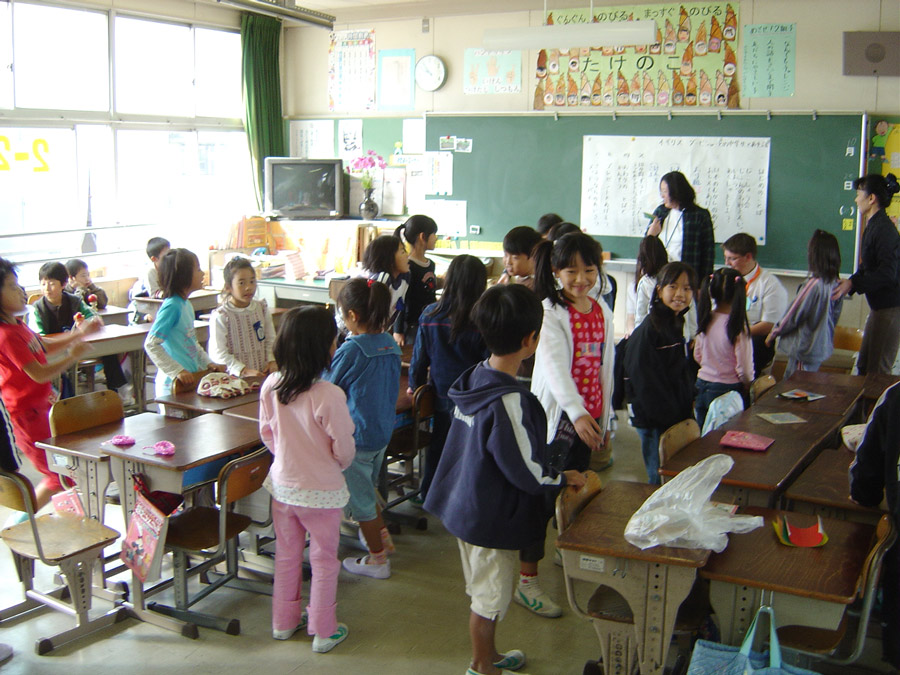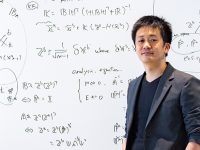A study in Japan highlights how schoolteachers circumvent the influence of the globally promoted version of critical thinking in their emic (indigenous) teaching practice.
A global survey shows that Japan’s schoolteachers are less prepared to teach critical thinking (CT) in their classrooms than their counterparts in other participating economies. To understand what underlies the gap between Japan and other regions, educational researcher Kazuyuki Nomura at Chiba University, Japan, looks into the emic understanding of CT among Japanese schoolteachers. His findings could facilitate practical measures for bridging the gap between global and Japanese perspectives of CT teaching.

Image title: A typical classroom in a Japanese elementary school.
Image caption: A new study finds that Japanese schoolteachers have unintentionally modified the concept of critical thinking and practice indigenous versions while adhering to the national curriculum guidelines that strive to align with global education standards.
Image credit: Tony Cassidy from Flickr (https://www.flickr.com/photos/63712423@N00/363713806, https://commons.wikimedia.org/wiki/File:JapaneseClassroom2.jpg)
License type: CC-BY-SA 2.0
Globally, critical thinking (CT) is regarded as a highly desirable cognitive skill that enables a person to question, analyze, and assess an idea or theory from multiple perspectives. CT has become an integral and mandatory part of global educational curricula, but its definition varies across contexts and cultural backgrounds.
To assess the implementation of CT, the Organization for Economic Cooperation and Development (OECD) conducts the Teaching and Learning International Survey (TALIS). In a 2018 survey (TALIS 2018), only 12.6% of lower secondary schoolteachers in Japan taught CT, compared to the global average of 58.1%. To understand this gap, Assistant Professor Kazuyuki Nomura from Chiba University, Japan, set out to understand the reason underlying Japan’s dismal performance in TALIS 2018. The study was made available online on March 31, 2023, and published in Educational Philosophy and Theory.
“Japan’s poor scoring in teaching CT puzzled me after I read the TALIS 2018 Results. Granted, CT varies from context to context, but little research has been conducted to understand what CT means in Japanese classrooms. Therefore, I took it on,” explains Dr. Nomura, an expert in intercultural education, speaking of his motivation for the study.
In this qualitative study, Dr. Nomura conducted semi-structured interviews with 12 certified Japanese schoolteachers from diverse backgrounds, including one from a school for children with special educational needs (SENs), between May and July 2022 to understand their perspectives on CT and the outcomes of TALIS 2018.
All participants agreed that the Japanese adjective “hihanteki” for the English word “critical” had a negative undertone, making most teachers hesitant about introducing CT to their classrooms. Most of the participants also felt that the use of “hihanteki shikoo” as a direct translation of the words “critical thinking” in the TALIS 2018 was not correct. Many teachers were unaware that the national curriculum guidelines contain the concept of CT. Teachers who knew about it and had tried integrating it into their pedagogy were in a sheer minority.
By contrast, multidimensional-multiperspective thinking (MMT), which is a facet of CT, enjoys more acceptance and popularity in Japan since the curriculum guidelines explicitly promote MMT. The study found that while most participants shied away from implementing CT, they were comfortable with MMT and used it regularly in their teaching. Additionally, almost all participants suggested that teaching MMT depends on socioeconomic status (SES), and that teaching MMT in low-SES schools was challenging.
Moreover, “empathy” is a hidden, central pillar of the Japanese school curriculum. All participants concurred that empathy is a core value in Japanese education, and most of them felt that it is impossible to practice CT or MMT without teaching empathy. Coupling MMT with empathy increased the autonomy of schoolteachers in Japan. They struck a delicate balance between the national curriculum, the school culture, and their teaching practice. As a result, they managed to circumvent the power of OECD-led global education.
Still, Dr. Nomura maintains that the merits of global CT can be combined with the Japanese teachers’ emic understanding of CT to get the best of both worlds. Through CT skills and empathy, Japanese teachers can enable a growingly diverse student population to think big and beyond the perimeters of Japan. Although CT and politics go hand-in-hand, as per the law, Japanese schools cannot teach politically controversial topics and must maintain neutrality. To remedy this, he recommends that teachers use non-Japanese or fictional examples to implement CT in their classrooms.
“As Japan is now becoming increasingly multicultural, teachers could use CT skills to help children think about Japan’s future, enhance open-mindedness, and live together with others with equity and dignity,” suggests Dr. Nomura.
For future research, classroom observations could be the best candidate, given that MMT is a core educational goal in the current national curriculum. The results of this study could thus help spark a much-needed discussion about CT teaching in Japan and elsewhere.
About Assistant Professor Kazuyuki Nomura from Chiba University
Dr. Kazuyuki Nomura is currently an Assistant Professor at the Graduate School of Global and Interdisciplinary Studies, Chiba University in Japan. Dr. Nomura is an educational researcher, and his research areas cover intercultural education and curriculum studies. He has published articles in reputed journals to his credits and has also co-authored several books. Dr. Nomura is a member of many educational research associations and has received accolades for his research contributions.
Funding information
This study was supported by JSPS KAKENHI Grant Number21K20208
Reference:
Authors: Kazuyuki Nomura
Title of original paper: Exploring the emic understanding of ‘critical thinking’ in Japanese education: An analysis of teachers’ voices
Journal: Educational Philosophy and Theory
DOI: 10.1080/00131857.2023.2192925
Affiliations: Graduate School of Global and Transdisciplinary Studies, Chiba University
Contact:
Kazuyuki Nomura
Graduate School of Global and Transdisciplinary Studies, Chiba University
Address: 1-33 Yayoi, Inage-ku, Chiba 263-8522 JAPAN
Email: kazu@chiba-u.jp
Public Relations Office, Chiba University
Address: 1-33 Yayoicho, Inage, Chiba 263-8522, Japan
Email: koho-press@chiba-u.jp
Tel: +81-43-290-2018
Recommend
-

Functioning of Biological Diversity: Lessons from Ecology on the Importance of Minority Perspectives
2023.06.15
-

Viewing a Diverse World through the Lens of Agriculture and Food: Enriching Global SDGs Education with Insights from Extensive Overseas Field Research
2023.08.31
-

Realizing the World’s Best Environmental Prediction Science Laboratory
2022.07.26


